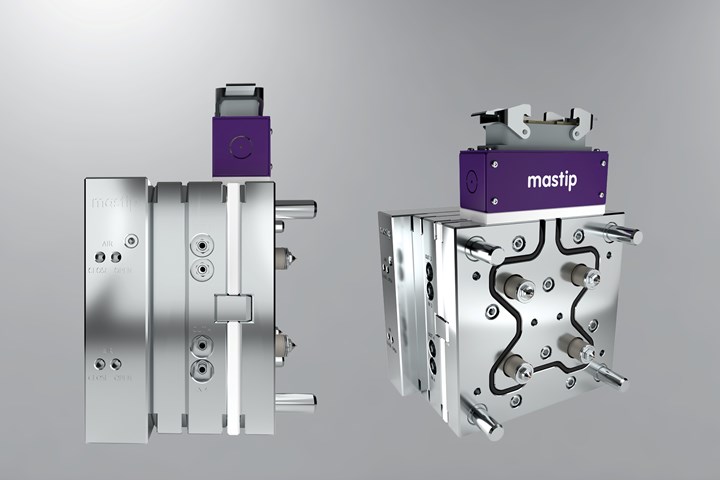LSR Cold Deck Design Facilitates Repeatable, Short Production Cycle
Mastip’s LSR solution fits mold plates, manifold and nozzles with cooling channels to ensure the curing cycle only once it enters the heated cavity plates.

Photo Credit: Mastip Inc.
Global hot runner innovator Mastip recently launched its liquid silicone rubber (LSR) molding solution, aiming to cater to the needs of its large customer base in automotive, medical and consumer electronics segments.
LSR molding uses the process of injecting liquid silicone material mixed with a catalyst into a heated mold, accelerating the curing cycle. Mastip says LSR injection molding has been adopted in a variety of applications due to silicone rubber’s mechanical and chemical properties such as flexibility, heat resistance and tensile strength, and is particularly useful for moldmakers facing the challenge of achieving a uniform cooling profile from the molding machine to the mold. For example, LSR is said to be an ideal material for products with specific sealing requirements such as car key housings, gaskets in automotive, respirator masks in medical devices and electronic wearables.
Mastip’s LSR solution inherits the latest technologies in the family. Featuring a “Cold Deck” design, the mold plates, manifold and nozzles are fitted with cooling channels to ensure the mixed material is kept in its uncured condition as long as possible until it enters the heated cavity plates. Valve gates also enable optimal control over the injection cycle, while ensuring the flow channels and gate are free of cured material. Mastip says its solution helps achieve shorter production cycle and higher product quality.
Moreover, Mastip delivers its solutions to more than 40 countries via its subsidiaries and global distribution partners, providing easy access to the company’s technical consultation and more responsive product support.
Related Content
-
Fundamentals of Designing the Optimal Cooling System
The right mold components can help improve mold cooling and thereby produce higher-quality parts.
-
How to Eliminate Chatter
Here are techniques commonly used to combat chatter and guidelines to establish a foundation for optimizing the moldmaking process.
-
Maintaining a Wire EDM Machine
To achieve the ultimate capability and level of productivity from your wire EDM on a consistent, repeatable and reliable basis, regular maintenance is a required task.











